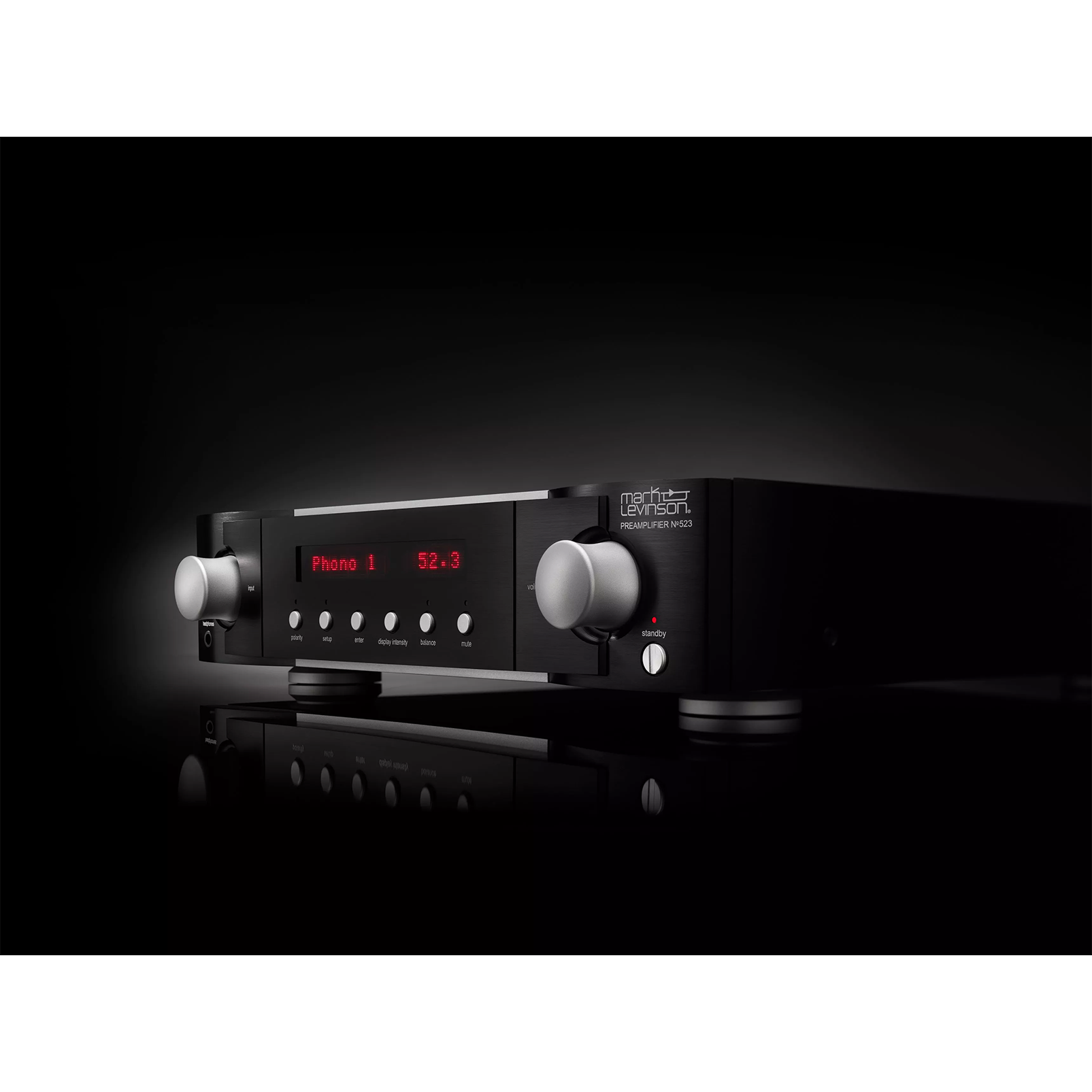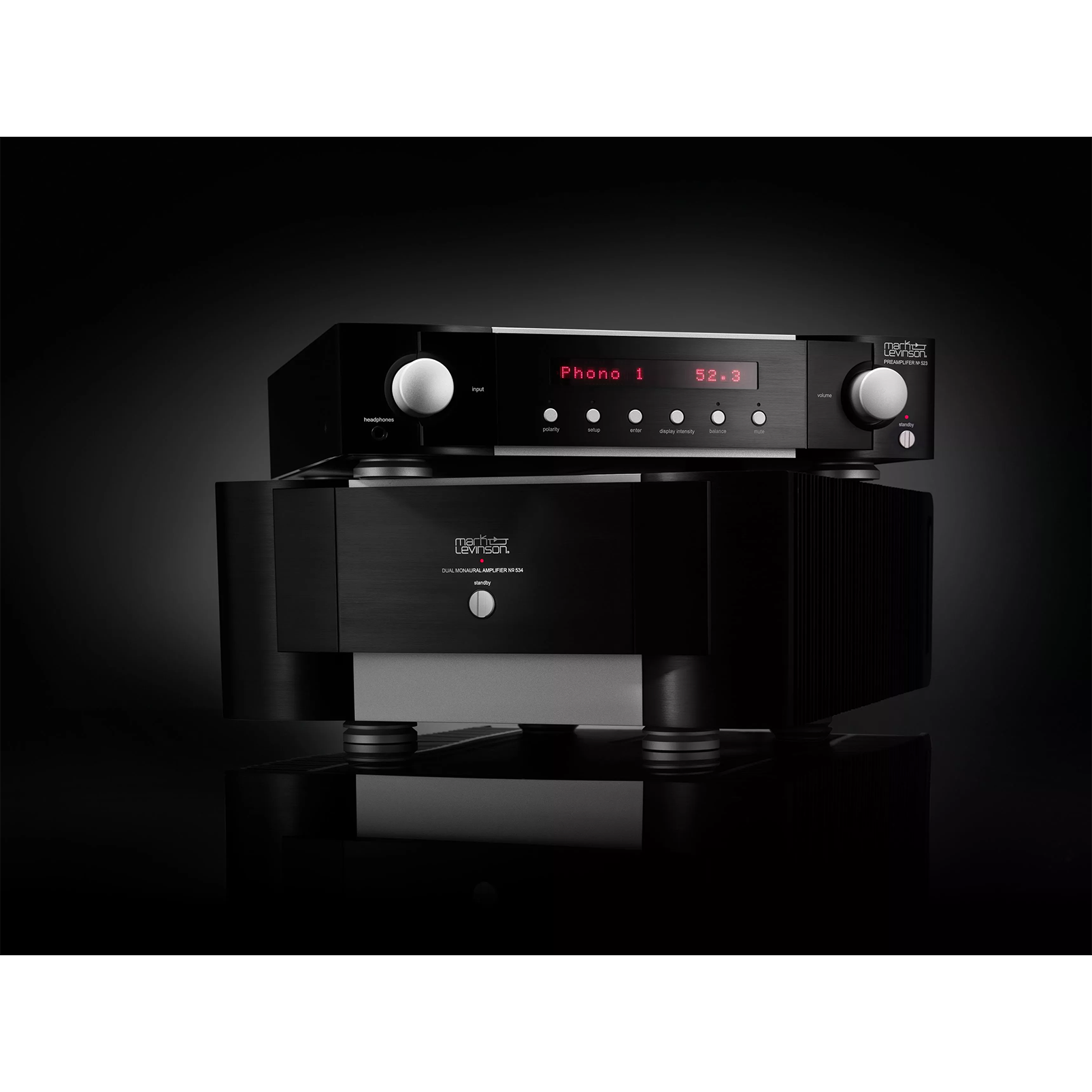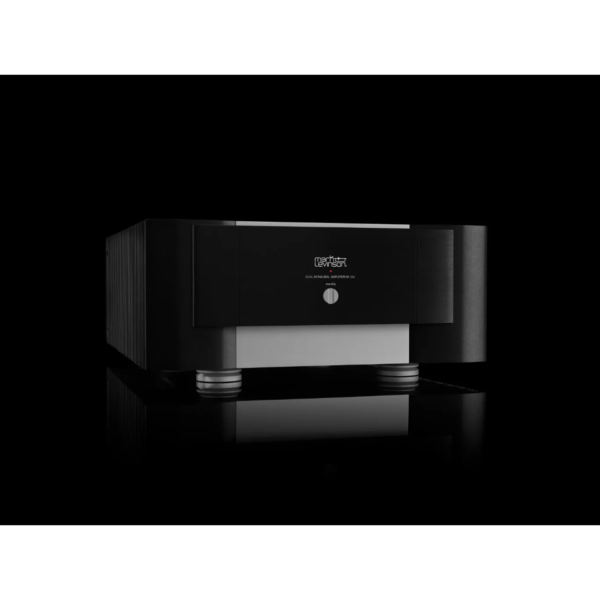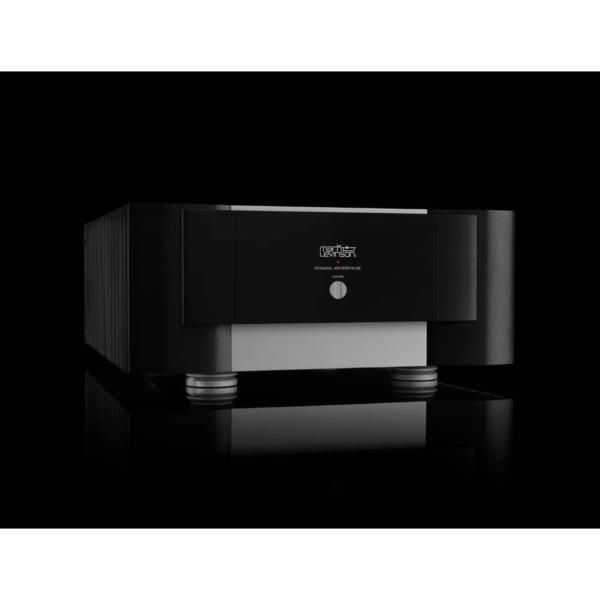Mark Levinson
Mark Levinson № 523 Dual-Monaural Preamplifier with Phono Stage
Hear every nuance and intricacy of your music with the № 523. This high-end preamplifier serves as the hub of your audio system and perfectly preserves analog audio signals — so you can experience the full potential of the music you love.
Uncover details you’ve never heard before
Detailed Analog Audio
The № 523 includes a high-performance Pure Phono module that’s housed in its own steel enclosure to reduce noise and deliver outstanding performance. Your favorite vinyl albums will never sound better.
Pure Path Circuit Design
Our proprietary approach to circuit design delivers uncompromising musical purity and an engaging listening experience. By using discrete components carefully selected for their precise function, the № 523 delivers unmatched sound quality that captures the nuances of every note.
High-Performance Headphone Output
Unleash all the performance your headphones can deliver. The № 523’s Main Drive headphone output has enough current capability to drive headphones directly, without a separate amp. Enjoy an incredibly detailed personal listening experience — and lose yourself completely in the music.
Highlights
| Pure Path discrete, direct coupled, fully balanced, dual-monaural signal path |
|---|
| Discrete, balanced R-2R ladder volume control for precision and performance |
| Class-A Pure Phono stage with custom configuration for MC and MM cartridge compatibility |
| Integrated Main Drive fully balanced class-A headphone preamplifier circuitry |
| Selectable fourth-order, 80 Hz high-pass filter allows seamless integration of subwoofers |
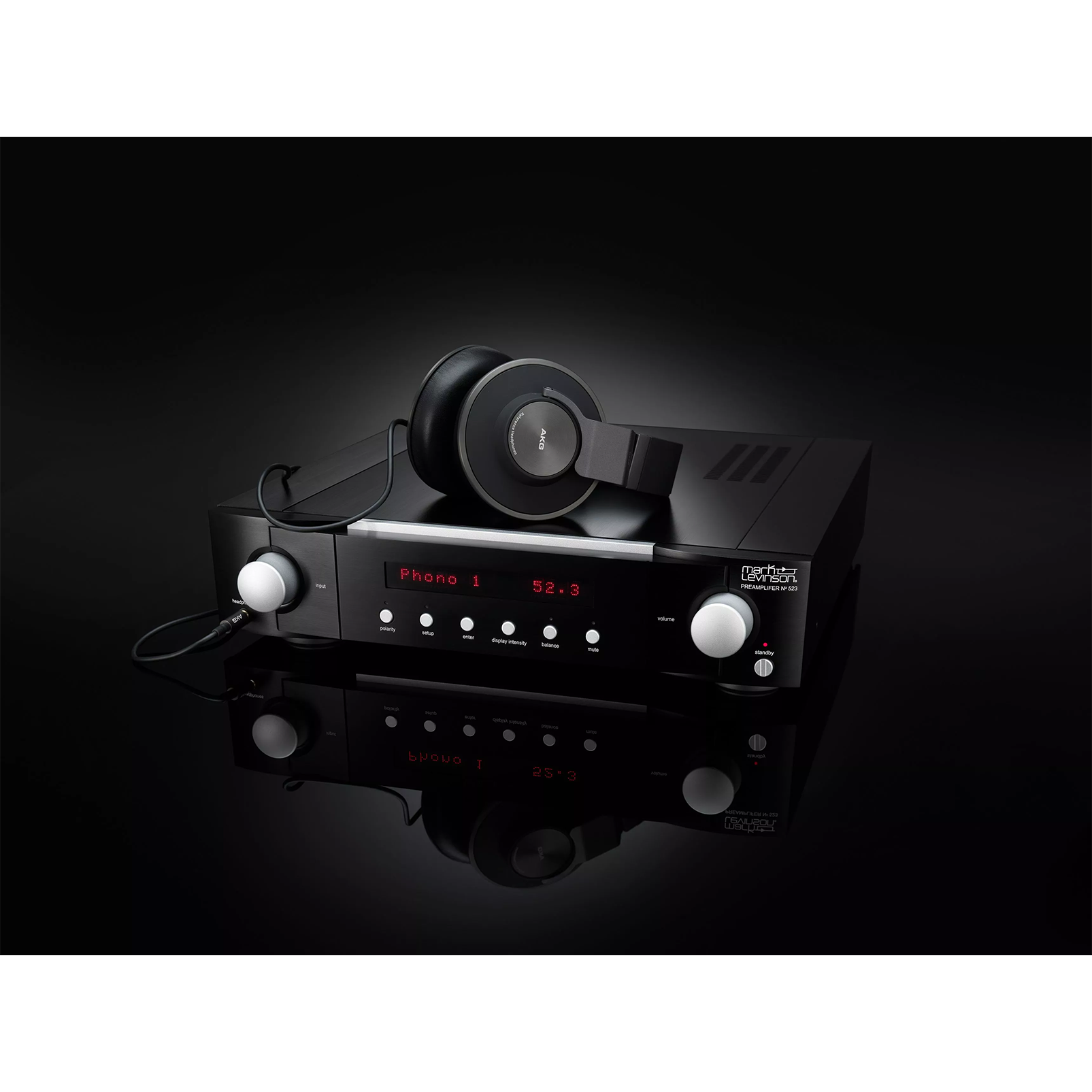
The Mark Levinson № 523 is the definitive preamplifier for the analog music lover. Six line-level analog and phono inputs travel through the Mark Levinson proprietary Pure Path discrete, direct-coupled, fully balanced, dual-monaural signal path for breathtaking purity and performance. With precision control including a discrete, balanced R-2R Ladder volume control, class-A Pure Phono stage, and class-A Main Drive Headphone output, the № 523 preamplifier delivers an uncompromising performance regardless of analog source. Housed in a 6000-series aluminum chassis, like all Mark Levinson equipment, the № 523 is designed and handcrafted in the USA.
Mark Levinson Pure Path Circuit Design
Since 1972, Mark Levinson has been dedicated to the uncompromising art of sound, with the guiding principle of musical purity above all else.
To achieve that goal like never before, Mark Levinson engineers scoured company archives, ultimately developing a circuit-design philosophy called Pure Path. On a conceptual level, its hallmark principles include a discrete, direct-coupled, fully balanced, dual-monaural signal path that delivers unrestricted, uncompromised sonic purity. Far from merely arranging high quality components in an intelligent manner, Pure Path is the meeting of science and art: Mark Levinson engineers are tasked to create the best possible measured AND subjective performance. To quote Albert Einstein: “Everything should be made as simple as possible, but not simpler.” Pure Path highlights in the № 523 include Folded Cascodes, an R-2R Ladder volume control, the class-A Pure Phono stage, and class-A Main Drive Headphone amplifier output.
Analog Mastery: The Folded Cascode
Mark Levinson components are designed around a Pure Path amplifier circuit concept that makes heavy use of a circuit design element called a cascode. Originally created for improving the bandwidth of vacuum tube circuits in radios, Mark Levinson engineers deploy cascodes in Pure Path circuit designs to both improve bandwidth and enhance linearity. A cascode combines two transistors so that they operate as a single composite device that functions like a single transistor, using the wanted characteristics of each component transistor, and rejecting the unwanted characteristics.
Mark Levinson engineers began their design of the preamp gain stage with pairs of JFETs (junction field-effect transistors), chosen for their low noise and high gain. JFETs achieve these characteristics in part by being large, and with their large size comes nonlinear gain – or distortion. To mitigate this, BJTs (bipolar junction transistors) were added to the circuit. The BJTs exhibit very low input impedance and very high output impedance, which translates to excellent bandwidth and linearity. By creating a cascode of the JFETs and BJTs, they created a design with the best characteristics of both sets of devices. Engineers than connected the output of the cascode to another transistor of the opposite “gender.” Current flows through it in the opposite direction to “turn around” the direction of the signal current. This special connection is called a Folded Cascode and it is a hallmark of the Pure Path circuit: high gain with low noise, wide bandwidth, and excellent linearity.
Superior Volume Control: The R-2R Ladder
The basis of many volume controls is the venerable analog potentiometer – a device with a number of performance drawbacks. The mechanical connection wears out, creating scratching or crackling noises; it is nearly impossible to manufacture an identically performing pair, and mismatches in a stereo pair can cause level imbalances between the two channels; and due to their varied reaction to parasitic capacitances at different volume settings, the sound changes depending on where the volume is set. Rather than attempting to improve upon this flawed design, Mark Levinson engineers abandoned it. Instead, they employed a complex circuit architecture called an R-2R Ladder. In the R-2R Ladder, a string of resistors, all with identical resistance (R), form the side of the ladder, with another set of resistors forming the rungs, all identically with double the resistance (2R). This unique circuit takes whatever current appears at its input and successively divides it in half at each “rung” of the ladder. Different combinations of “rung” currents can then be selected and added together, precisely delivering nearly any output current, and thereby, volume setting. An R-2R Ladder is a highly accurate device. The currents through the rungs are determined by fixed resistors, capable of very tight tolerances, able to be closely matched to one another in value. Analog switches “steer” the currents, are precision devices, and have no mechanical contacts to wear out. In short, the R-2R Ladder solves all the problems inherent to potentiometer-based volume controls. That’s why it is a cornerstone of Mark Levinson Pure Path design philosophy.
Military Grade Components
All Mark Levinson equipment employs electronic components carefully chosen for their specific task. Gain-stage JFET pairs have high gain, low noise, low distortion, and because they are encapsulated in the same package, the two devices operate under nearly identical conditions. Capacitors used in critical filtering locations are film types, noted for their consistent performance regardless of temperature and frequency. Finally, resistors in critical gain-setting and feedback locations use tantalum nitride thin-film elements. An extremely costly material, tantalum nitride typically finds use in sensitive military equipment because it is unusually stable with respect to temperature, exhibits very low noise, and is unaffected by magnetic fields. In fine audio equipment, those characteristics make the sound even more revealing and effortless, free of the low-level nonlinearities caused by lesser resistive materials as they heat and cool under dynamic conditions. Housed in an aircraft-grade 6063-T5 extruded aluminumchassis, the № 523 features extremely high build precision, to exceedingly low tolerances.
Pure Phono: Class A for a Classic Medium
Preamplifying from turntable to line level can a difficult task, and it is an area where some equipment makers skimp on components and design.
The № 523 preamplifiers introduce a new Mark Levinson phono stage, Pure Phono, itself following Pure Path design principles including discrete design, free of op amps. The Pure Phono stage operates exclusively in class A throughout, employing tantalum nitride thin-film resistors polypropylene capacitors with punishingly low tolerances. The Pure Phono stage also contains physically separated channels and balanced inputs for purity. The Pure Phono stage offers a fixed-gain MM section with five capacitive cartridge-loading settings, and an MC section with three gain settings and 10 resistive cartridge-loading settings. And an ultrasonic filter intelligently compensates for rumble and warping.
Completing the Signal Path
The № 523 offers five line-level analog inputs: two balanced (XLR), three single-ended (RCA), in addition to the Pure Phono (RCA with grounding pin) input. The preamplifier delivers its signal to balanced (XLR) and single-ended (RCA) stereo outputs, as well as a 1/4-inch 6.3mm) Main Drive Headphone output integrated into the front panel metalwork – a first for Mark Levinson.
The Main Drive Headphone amplifier circuit drives up to 32-ohm headphones in class A by employing the main output circuit rather than a secondary signal path: a perfect example of reducing clutter in the circuit design. A selectable fourth-order, 80 Hz high-pass filter enables seamless integration of a single or dual subwoofers for full-range performance with a wide range of loudspeaker setups.
System-integration connectivity includes Ethernet/IP control, RS-232, USB for monitoring and configuration via web page, plus 12V triggers and an IR input. An included machined metal remote delivers the robust feel and precise control befitting of a component of the preamplifier’s caliber.
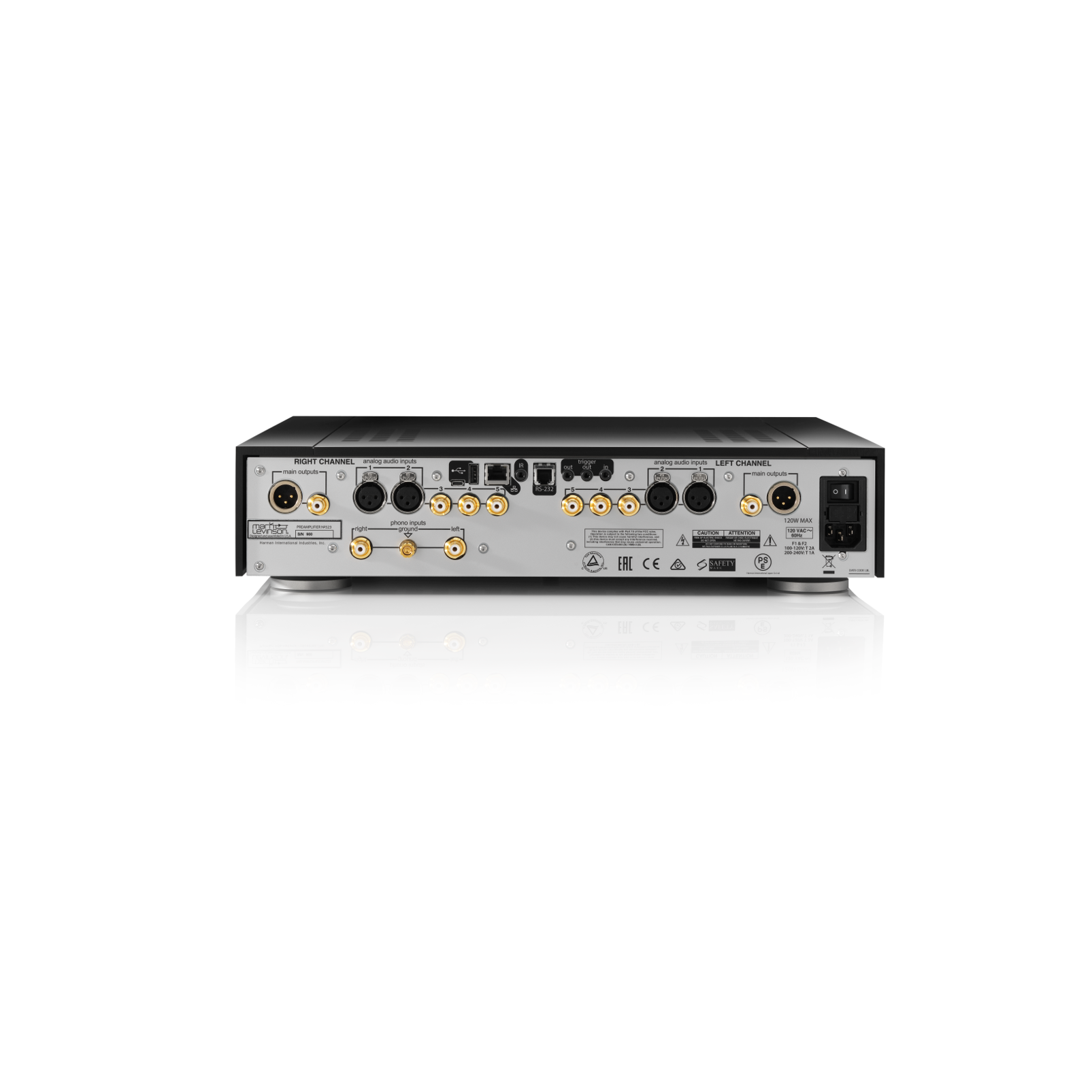
3.0dB single-ended
3.0dB single-ended
0.4Hz to 370kHz: +0.1 / -3dB
- at 20kHz (2VRMS single-ended or 4VRMS balanced output): <0.005%
A-weighted: >100dB
- at 20kHz: <-82dB
Standby, Power Save mode: 5W
Standby, Normal mode: 67W
Power on, idle: 70W
Power on, idle, headphones connected: 83W
- Width: 438mm
- Depth: 457mm

